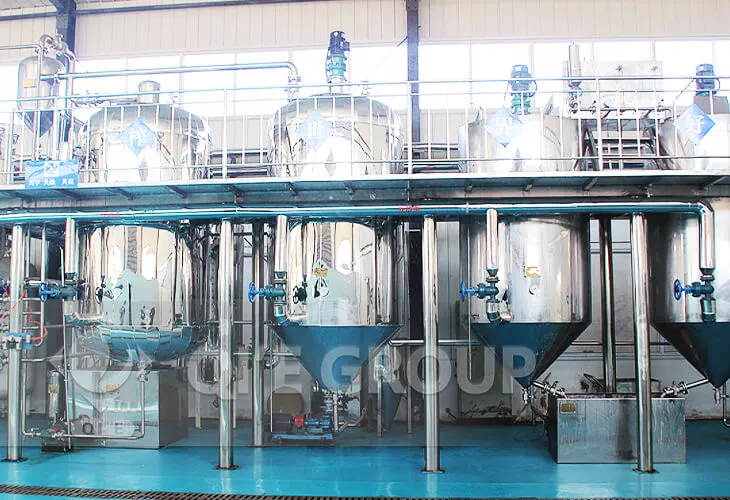
Many people have a common misconception about soybean oil production, thinking it's a simple process. However, the reality is far more complex and sophisticated. A modern soybean oil factory uses a multi - step production process to ensure high - efficiency oil production, which is the key to meeting the global demand for high - quality soybean oil.
The first step is cleaning. Raw soybeans often contain impurities such as stones, dust, and broken beans. By using advanced cleaning equipment, these impurities can be effectively removed. For example, a well - designed cleaning system can remove up to 99% of impurities. This step is crucial as impurities can damage the subsequent processing equipment and affect the quality of the final product.

After cleaning, the soybeans go through the shelling process. The soybean hulls are removed because they contain very little oil and can increase the load during the pressing process. A good shelling machine can achieve a shelling rate of over 95%. Removing the hulls not only improves the oil extraction efficiency but also reduces the energy consumption in the subsequent steps.
The de - hulled soybeans are then sent to the press. In this step, about 60 - 70% of the oil in the soybeans can be extracted. The pressing process uses large - scale screw oil presses. These presses apply high pressure to squeeze out the oil from the soybeans. A modern large - scale screw oil press can process up to 50 tons of soybeans per day.

After the first pressing, the remaining soybean cake is cooked. The cooking process is carried out at a temperature of about 100 - 110°C for 30 - 40 minutes. This step helps to break down the remaining oil - containing cells in the soybean cake, making it easier to extract more oil in the next pressing.
The cooked soybean cake is pressed again. This second pressing can extract an additional 20 - 30% of the remaining oil. In total, through the two - step pressing process, a modern soybean oil factory can achieve an oil extraction rate of 18 - 20%.
The crude oil obtained from the pressing steps still contains some impurities such as soybean residues and water. Filtration is used to remove these impurities. A high - efficiency filtration system can remove up to 99.9% of impurities, ensuring the clarity and purity of the oil.
For higher - quality soybean oil, a refining process can be carried out. Refining includes degumming, deacidification, decolorization, and deodorization. This process can further improve the flavor, stability, and shelf - life of the soybean oil.

The multi - step production process in a soybean oil factory is not only crucial for ensuring high - quality soybean oil but also has significant economic benefits. The high oil extraction rate of 18 - 20% means that more oil can be produced from the same amount of soybeans, which is both cost - effective and profitable. Moreover, each step in the process can be optimized to meet different production requirements, whether it's for large - scale commercial production or for producing high - end, specialty soybean oil.
In conclusion, the multi - step production process in a soybean oil factory is a well - designed and efficient system. It combines advanced technology and strict quality control to produce high - quality soybean oil. If you're a global purchaser looking for a reliable soybean oil production solution, this multi - step process is definitely a choice that can bring you long - term economic benefits.
Ready to upgrade your soybean oil production? Contact us now to learn more about our state - of - the - art multi - step production process and how it can boost your business's profitability!

